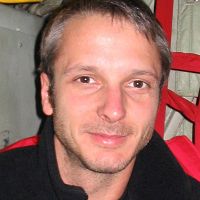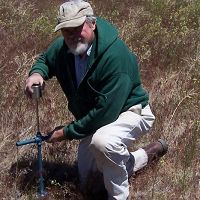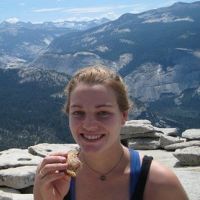Riebe et al., 2009
Variations in rock-fragment abundance and bulk geochemistry of soils across the Southern Sierra Nevada CZO: Implications for hillslope-channel coupling (Invited).
Riebe, C.S., Hunsaker, C.T., Johnson, D.W., Jessup, B.S. (2009)
Fall meeting, American Geophysical Union, December 2009. 90(52). Abstract EP51E-02.
-
Sierra, INVESTIGATOR
-
Sierra, INVESTIGATOR
-
Sierra, INVESTIGATOR
-
Sierra, GRAD STUDENT
Abstract
As the interface between air and rock, the critical zone integrates everything from the biologically-mediated breakdown of minerals to the effects of climate change and tectonics on soil formation and sediment transport. River incision into rock provides a crucial, first-order link between extrinsic forcing factors (such as climate change and tectonic uplift) and the hillslope processes that shape the critical zone by changing soil thickness, geochemistry, and ultimately topographic form. Theoretical considerations and experimental studies indicate that there is great potential for feedbacks between hillslope and channel processes. For example, bedrock river incision should be regulated in part by both the quantity and caliber (i.e., grain-size distribution) of sediment supply, which together affect the availability and persistence of bed-scouring tools in channels. Although sediment supply rates and grain-size distributions can be readily measured in many landscapes (e.g., using cosmogenic nuclides and traditional soil sampling techniques), the importance of measuring them together, to help unravel and understand the complex linkages among hillslope and channel processes, has been overlooked until recently. Here we compile and analyze data from nearly 200 soil pits arrayed across a nearly uniform grid of sampling localities within the Southern Sierra Nevada Critical Zone Observatory (CZO). The CZO is part of the Kings River Experimental Watershed, where measurements of sediment and solute yields are an integral part of an ongoing, multi-decadal effort to monitor stocks and flows of biogeochemical cycles. Our quantitative data on rock fragment abundance, regolith density, and bulk geochemistry represents a range of topographic conditions, from convex ridgelines to positions at the toes of slopes, next to stream channels. Our results indicate that the percentage of coarse (>2 mm) material—which presumably becomes the bedload that abrades and thus lowers channels—varies significantly in soils across the 4 CZO watersheds, from an average of 15% in one extreme case to 50% in another. Rock fragment abundance is lowest in the catchment that also exhibits both the highest sediment yield and the lowest percent coverage by bare rock outcrops. This may indicate that both sediment yield and the physical breakdown of rock are limited by percent coverage of bare rock, consistent with a decades-old hypothesis that was developed to explain relationships among weathering, erosion, outcrop density, and topographic form in the region.
Citation
Riebe, C.S., Hunsaker, C.T., Johnson, D.W., Jessup, B.S. (2009): Variations in rock-fragment abundance and bulk geochemistry of soils across the Southern Sierra Nevada CZO: Implications for hillslope-channel coupling (Invited) . Fall meeting, American Geophysical Union, December 2009. 90(52). Abstract EP51E-02..
Explore Further




